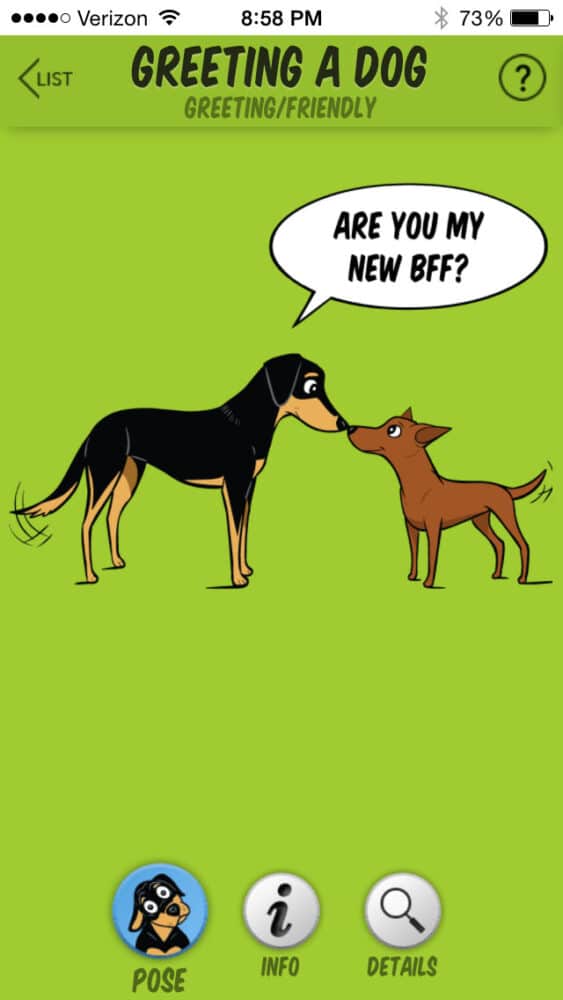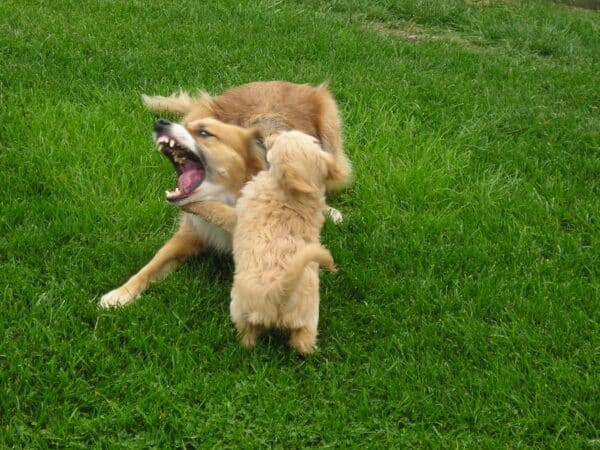Bites happen because not all pet parents are educated about dog body language and proper socialization. Case in point, a 10-week-old Cocker Spaniel was killed by a Mastiff recently on a public beach. The puppy’s owner emailed me after, asking what signs she missed from the other dog and how she could have prevented the horrible incident. I wept, reading her desperate plea for some kind of understanding. I had a hunch, so I asked her certain questions.
Turns out, this experienced owner was at the beach with her three dogs, all Cocker Spaniels: an adult, a 6-month-old pup and the younger puppy. They were walking along when they met a man with a Mastiff, who was calmly walking on a leash. The younger puppy went to say hello to the new dog, like any puppy that age would. The Mastiff took the puppy’s head in his mouth and killed him, with one shake, instantly.
The attack had come swiftly and was completely unexpected by both of the owners. Let’s talk about why this was the perfect scenario for such a tragedy to strike.
The brown and black dog is standing defensively, not interested in playing with the puppy. (Image from Dog Decoder smartphone app/illustrated by Lili Chin)
The Mastiff
After questioning the man, the puppy’s owner found out he had rescued the Mastiff just three days earlier. The man had no idea his new dog would do something like this. Of course he wouldn’t, as he barely knew him.
When a dog is adopted from a shelter, foster home or even from a friend, it can be traumatic for them — traumatic in the sense that everything is new: their guardian, home, lifestyle… everything. Even in the best-case scenario, a stressed dog can bite.
We must remember that any dog can bite at any time! Keeping this in mind, we must make sure that we take it slowly with a new rescue dog or puppy. There needs to be an adjustment period during which we learn about each other and the dog learns about their new world. This can help to ensure the safety of everyone involved.
In answer to her question about body language signs she may have missed from the other dog, I told her that, in general, when socializing a puppy with other dogs, watch for: pulling on leash (meaning, the other guardian cannot control their dog), intense focus on the puppy, ears forward in alert, high tail, lip licking, body and facial tension, standing tall almost on tippy toes, direct stare and hackles up. Any or all of this body language may be present before an attack.
The puppy
This little guy did what any puppy his age would do. He was curious about everything and everyone. This is how an emotionally stable puppy acts. He went up to the Mastiff to meet yet another dog. Without fear, just curiosity, wanting to say hello and having no idea that the dog would hurt him. After all, the pups he lives with didn’t hurt him, other dogs he’d met didn’t hurt him, so how about one more? YAY, was all that was on his little mind.
The woman
This woman thought she was doing the right thing by taking her puppy out to socialize with other dogs and people. She was right. She had done it with her two other dogs and was following a recommended socializing protocol. What she didn’t realize is that taking a puppy, even the 6-month-old pup, to a public place can be dangerous without the proper education of reading dog body language, how to greet other dogs, without asking if the other dog is safe with puppies, then knowing how to interpret that answer. Without this knowledge, it is not recommended. We can’t predict what other dogs will do, even and especially if a dog is on a leash, as was the case with this man and his Mastiff.

A happy greeting. (Image from Dog Decoder smartphone app/illustration by Lili Chin)
When I’m in an off-leash area and see a dog on leash, I immediately call my dogs to me. A dog on leash in an off-leash area is a huge red flag and can represent a number of things. They could be reactive, aggressive, fearful, not well trained, or not well socialized; and because of any of these factors, the dog needs space and that should be respected. Also, a leashed dog is vulnerable. They can’t get away, and this alone can create anxiety. Even if they have no issues, a leashed dog may become uncomfortable and bite.
I’m ever so grateful that many veterinarians are on board with properly socializing puppies early in life. Socializing from 3 to 12 weeks is critical, as it is the period of a puppy’s life when bonding occurs and we have the opportunity to create positive experiences that will have a lifelong impact. It’s a learning period where meeting other dogs and people, and having new experiences, can help them grow into healthy, well adjusted adults.

My dog Rascal playing with a 10-week-old puppy in my yard. (Photo by Jill Breitner)
While we want to socialize our puppies during this important and influential time, we must take great care to only socialize them with dogs we know are safe and to never take our them to public places, even if they are places we frequent all the time. We should socialize a puppy in our own backyard or a friend’s backyard, with a dog known to be friendly and especially friendly with puppies; some adult dogs don’t tolerate puppies.
Knowing all of this can save many a puppy from being hurt or even killed.
About the author: Jill Breitner is a professional dog trainer and dog body language expert. She is a certified Fear Free Professional for Puppies and Kittens, as well as Certified in Animal Behavior and Welfare. She is the author of Dog Decoder, a smartphone app about dog body language. Join Jill on her on her Facebook page.
The post A Mastiff Killed a 10-Week-Old Cocker Spaniel Puppy, and It Was a Totally Preventable Accident appeared first on Dogster.
No comments:
Post a Comment